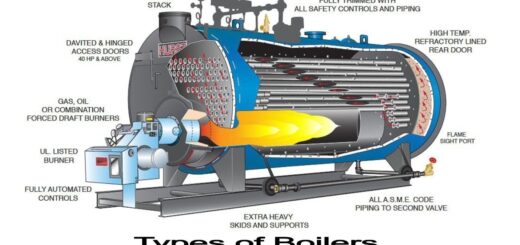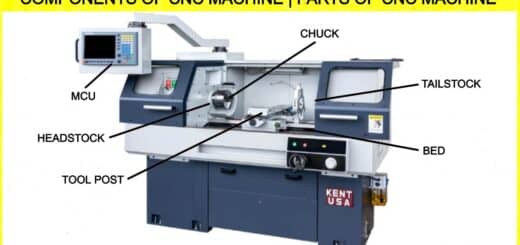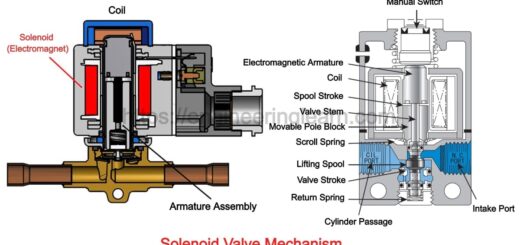What is Mechanical Seal? Types of Mechanical Seals for Centrifugal Pumps [Complete Guide]
![What is Mechanical Seal? Types of Mechanical Seals for Centrifugal Pumps [Complete Guide]](https://engineeringlearn.com/wp-content/uploads/2022/03/Mechanical-Seal-1024x539.jpg)
What Is a Mechanical Seal?
What is Mechanical Seal? Types of Mechanical Seals for Centrifugal Pumps [Complete Guide] :- DRP mechanical seal: This mechanical seal is a cartridge type. An end-face mechanical seal is a gadget utilized on a turning shaft to keep liquids in and foreign substances out. It forestalls the liquid traveled through a resource, most frequently a divergent siphon, from spilling. These seals are situated in the resource’s stuffing box or seal chamber. This is the region of the siphon where the siphon shaft interfaces with the drive.
With the exception of air seals, which will be addressed later, most mechanical seals have two flat faces positioned perpendicular to the shaft. The seal chamber housing has one of the faces mounted stationary. The principal seal is provided by the other face, which rotates with the shaft. The contact between the seal face materials is maintained by axial mechanical force and fluid pressure. This contact keeps the fluid in the pump and avoids leaks.
Types of Mechanical Seals
There are three different types of mechanical seals which are commonly used in the process:
- Cartridge
- Component
- Air
A cartridge-mounted, end-face mechanical seal is a totally independent unit that houses the fixing parts an organ, sleeve, and equipment. With the maker taking care of these errands, establishment and support are streamlined. Cartridges might be outfitted with a couple of seals, depending the application’s prerequisites.
Air Seal
End-face component mechanical seals are made up of a rotating part and a stationary seat that are mounted in a gland or housing. Installation and maintenance are more difficult than with cartridge seals since they are not present.
Air seals are non-reaching, pneumatic gadgets designed to seal turning shafts. These seals are essentially introduced in dry powder or slurry applications. They safeguard against item misfortune, outflows, and pollution by utilizing modest quantities of air or latent gas. This air is choked to make positive strain and a compelling seal.
Seal Chamber Types
The sort of seal chamber influences the seal plan and type picked.
- Mechanical seal Bore types
- Stuffing box bore types
The right drag size should be known to guarantee that the ideal mechanical seal type is chosen.
Seal Components
Secondary seals, static and/or dynamic, are seals between mechanical seal components and the equipment shaft and housing that compensate for shaft movement that could damage the seal faces.
Drive instruments – Set screws and drive pins are instances of drive systems used to give revolution to the pivoting essential seal face
Types of Mechanical Seals for Centrifugal Pumps
- Balanced seals
- Unbalanced seals
- Pusher seals
- Non-pusher seals
- Conventional seals
- Cartridge seals
A) Balanced Seals & Unbalanced Seals
A balanced mechanical seal arrangement is one in which the forces exerted on the seal faces are evenly distributed. Because of the lower face loading, the seal faces are lubricated more evenly, resulting in longer seal life. Today, find out more about our mechanical seal lubrication solutions.
Adjusted mechanical seals are especially fit to higher working tensions, regularly over 200 PSIG. They are additionally a decent decision while taking care of fluids with low lubricity and higher unpredictability.
Unbalanced mechanical seals are frequently used as a less expensive alternative to the more sophisticated balance seal. Due to greater control of the face film, unbalanced seals may have less product loss, but have a significantly shorter mean time between failures. For high pressure or most hydrocarbon applications, unbalanced seals are not advised.
B) Pusher & Non-Pusher Seals
Pusher seals use one or different springs to keep up with seal shutting powers. The springs can be in the alternating or fixed component of the mechanical seal. Pusher type seals can give fixing at exceptionally high tensions however have a disadvantage because of the elastomer under the essential seal face that can be exposed to wear as the face moves along the shaft/sleeve during activity.
Seal closing forces are maintained by a metal or elastomeric bellows in non-pusher seals. Medium/lower pressure applications are limited for bellows seals.
Both pusher and non-pusher plans are accessible in adjusted and unequal arrangements.
C) Conventional Mechanical Seals
Conventional seals are generally used on ordinary service equipment since they are less expensive. Because these seals are fitted as distinct components, they demand a greater level of operator skill to service.
D) Cartridge Type Seals
Cartridge type mechanical seals consolidate all of the seal components into a solitary gathering. This drastically decreases the potential for get together blunder and the time expect for seal substitutions. Find out about the distinction among cartridge and non-cartridge mechanical seals today.
7 Types of Component Mechanical Seals
Although certain seals and gaskets are custom-made for specific applications, most seals that prevent leakage at the interface of a moving element and a stationary part can be classified into Seven different types of component mechanical seals.
1. Wave Spring Mechanical Seals
Mainly utilized for fluids of high thickness, wave spring mechanical seals are famous for drug, dairy, brewery and food handling applications. They are frequently fitted to the shaft with grub screws and on account of high thickness media would likewise have stationaries with against revolution pins.
2. Water Pump Seals
Because water is such a poor lubricant for seal faces, it’s vital that water pump seals for applications like shower pumps, irrigation, heating systems, swimming pools, and spas use high-quality materials.
3. Bellows Mechanical Seals
Conservative, flexible, incredibly solid seals reasonable for a wide scope of uses. Suggested for media containing solids and are generally utilized in Pumps, blenders, blowers and so on.
4. Diaphragm Seals
Diaphragm seals, which have parallel springs, are utilised in a wide range of applications, including agitators, compressors, mixers, pumps, and other rotary shaft equipment.
5. Conical Mechanical Seals
This is an incredibly flexible and famous mechanical seal. Accessible in a wide scope of materials to suit an assortment of conditions, they are vigorous and tough. Anyway these seals are revolution ward and accompanied either left hand or right hand springs.
6. Parallel Mechanical Seals
Parallel seals are a single, heavy-duty spring seal. They are utilised in marine pumps, waste-water, pulp and paper, and textile industries, as well as refrigeration compressors, as a suitable general-purpose seal.
7. Multi Spring Seals
Demonstrated compelling plan, PTFE wedge styles are regularly utilized in compound the synthetic business for difficult applications like destructive interaction liquids.













